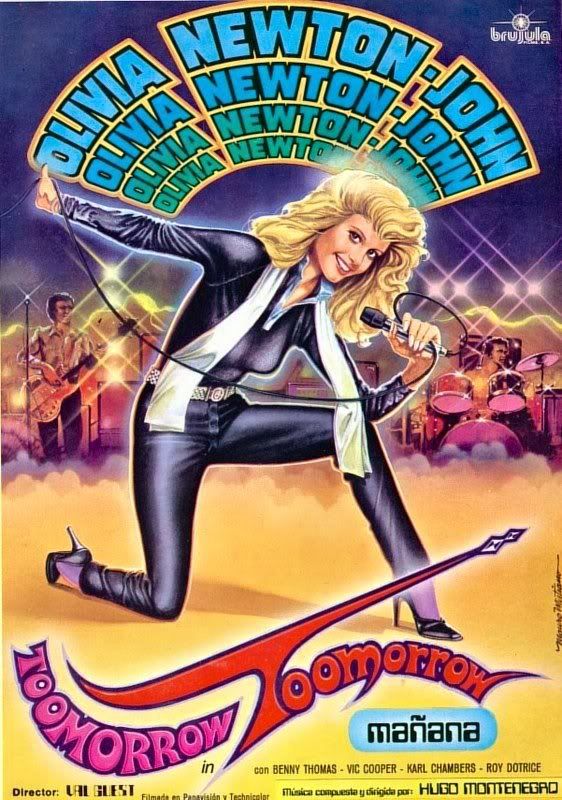Wednesday, May 11, 2016
Thursday, May 05, 2016
High-Rise
My review of "High-Rise", Ben Wheatley's disturbing adaptation of the Ballard novel, can be found here. 

Labels:
Ballard,
Ben Wheatley,
G,
High-Rise,
J,
Tom Hiddleston
Wednesday, May 04, 2016
Saturday, April 30, 2016
"If elected I will not serve" -We should be so lucky
Originally produced as a special episode of "The Smothers Brothers Comedy Hour", this 1968 fake-documentary (music by Nelson Riddle!) is still a nice bit of political satire.
Pat Paulsen For President from The Hammer Works on Vimeo.
Pat Paulsen For President from The Hammer Works on Vimeo.
Labels:
1968,
Pat Paulsen,
politics,
President,
smothers brothers
The declining stream
The New York Times offers a conversation between A.O. Scott and Manohla Dargis on streaming video and its threat to film exhibition, triggered by the recent announcement by Sean Parker (you know him as the Justin Timberlake character in "The Social Network". Also of interest (linked within the Times piece) are David Bordwell's observations on how the new emphasis on streaming video helps the film industry maintain its control on what people can see. For over thirty years, the home-video and cable tv industries have been feeding audiences a myth that theyve places the entire history of film within your reach when in reality they've always tried to gain more and more control. Today we're seeing fewer and narrower theatrical releases, while services like Netflix and Amazon are using bait and switch tactics to push consumers toward their own exclusive productions (Consume! Conform!), while allowing their current libraries to shrink, Will streaming services follow the lead of cable networks and gradually reduce their offerings in order to cut costs and maximize profits? (Remember when American Movies Classics actually showed Classic American Movies?), Read this report from Allflicks.com about Netflix's dwindling selections for a glimpse of the future.
Granted, not all news is bad. While I tend to suspect that the only real achievement of the streaming revolution will be to line the pockets of our Internet providers, I'm intrigued by the new announcement of Filmstruck, a reportedly inexpensive new streaming service combining the libraries of Criterion, Turner Classic Movies, Milestone, Flicker alley and others. Will it live up to its promise? We'll find out in a few months.
Granted, not all news is bad. While I tend to suspect that the only real achievement of the streaming revolution will be to line the pockets of our Internet providers, I'm intrigued by the new announcement of Filmstruck, a reportedly inexpensive new streaming service combining the libraries of Criterion, Turner Classic Movies, Milestone, Flicker alley and others. Will it live up to its promise? We'll find out in a few months.
It's her life.

A reason to wish you were in New York: Anna Karina is coming to town. And at theauteurs.net, a great collection of her non-Godardian posters to commemorate the event.
Michael Moore's Friendly Invasion
Michael Moore's "Where to Invade Next" didn't quite get the attention it deserved when it opened earlier this year, in part because the director's illness put an end to a planned promotional tour, but also in part because of the kind of "What has he done lately?" attitude I describe below. It's now available on iTunes and other sites, and will hit stores in a few days, My review , written in early February, was never printed, so I'm posting it here.
When I mentioned that I liked Michael Moore's new film “Where To Invade Next”, at least three people responded “Isn't his schtick getting kind of old?”. That question, posed by people who (I'm assuming) would identify themselves as “liberal”, reveals a great deal about how attitudes toward non-fiction film, the politics of image, and the general tone of political discussion have changed (very badly, as for that last item) since Moore first picked up a camera.
More than twenty-five years have passed since the appearance of “Roger and Me”, one of two films at the end the 1980s (the other being Errol Morris' “The Thin Blue Line” ) which re-wrote the rules of cinematic reporting and many of things which made traditional documentarians apoplectic – a deeply subjective narrator, deliberately provocative editing and an investigative approach that was structured more like a comic monologue than a dry news item – have since become not just common but inescapable. Moore's greatest invention was presenting himself as a faux-innocent everyman, a concerned citizen who viewed a serious subject (the economic decline of his hometown, Flint, Michigan, in the Reagan years) through its effect on his own friends and neighbors. Moore created a comic character who just happened to share his name and background, an aw-shucks small-town kid who doesn't understand why he can't get the head of one of the world's largest corporations to return his phone calls.
Moore's schtick caught on, creating a method that has since been imitated (badly) by tv hosts, stand-up comedians and right-wing weasels like James O'Keefe. Moore's willingness to satirize himself has made him a public figure and an easy target for ridicule, but it would be a mistake to confuse the popular image of Moore (as seen on “South Park” etc.) with the real thing. He's in the uneasy position of Lenny Bruce, who used to complain that he was being punished for the inept performance of attorneys and policemen who tried to imitate his act in court. But while Moore's detractors are stuck with criticising his fictional alter ego (yes, he wears baseball caps and he is fat) , the real Moore remains an ambitious thorn in the side of American politics, always finding new ways to irritate his victims. In reality, his schtick has changed, his subjects have become more serious, and his film-making more sophisticated and engaging. By focusing solely on his celebrity, his critics are -unsurprisingly – choosing to ignore the increasingly serious subjects he addresses.
Moore's latest film “Where to Invade Next” mostly abandons the political idiot-savant image (though he can't resist slipping into it at times, as when he horrifies a group of French children by showing them a typical American school lunch) and addresses a wide range of issues from education to prison reform, using the successes of nine different countries (Italy, France, Finland, Slovenia, Germany, Portugal and Norway) to show how the rest of the world manages to educate their children, give women an equal voice in politics, provide health care , enforce drug laws, treat workers fairly and create an awareness of their political history – almost always, he explains, using the “American Dream” or our constitution as their model.
Even if you prefer to ignore Moore's jokey set-up (that he's “invading” these countries, American flag in hand, and stealing their best ideas) and his occasional tendency to overstate the obvious, “Where to Invade Next” is a thoughtful, detailed and, yes, optimistic film about real social issues and realistic solutions. It would be easy to argue (and I'm sure someone will) that all of those countries have problems of their own; Moore acknowledges this within the film but states that his intention is to show only what these countries are doing right. It's a defensible position: although the film shows the inner workings of these foreign schools, prisons, factories and other institutions at length, the implied message is “Why aren't we doing these things?” Moore has always presented himself as a kind of populist clown, but as we head deeper into an election cycle that proves nothing more than our ability to create a bigger freak show that the previous election cycle, this clown is starting to look refreshingly sensible.
Friday, April 29, 2016
American Spirit?
The St. Louis Art Museum, which once hosted one of the most vital film programs in the area but has long given up any serious interest in cinema, has announced its summer film series. The theme is "The American Spirit" and the selections are ...at best, banal: "Top Gun", "Rocky", "E.T." and "Forrest Gump". America: we're militaristic, slightly racist, infantile/paranoid and a little bit slow...
This was originally posted on the Facebook page of a local organization, where it raised complaints from other members (well, at least one member) that it was - wait for it - "inappropriate", I stand by my criticism that an institution that once hosted events like a complete Keaton retrospective (at a time when some of his films could only be found in prints had to be shipped in from France and Eastern Europe) , a sold-out "China Film Week" or a comprehensive study of Hollywood genres timed to coincide with the Bicentennial , had fallen into what I call the Blockbusterization of film history , Perhaps I should update that phrase to the Redboxing/Netflixing of Film History, but the point remains the same. Lots of institutions make poor choices when it comes to film presentations ("Hey, we'll show "Kung Fu Panda 3" on a big inflatable screen and bring in a lot of food trucks!") but given the stature of the Art Museum and its history, isn't it reasonable to expect more?
Labels:
American Spirit,
Forrest Gump,
St. Louis Art Museum
Friday, March 12, 2010
Saturday, March 06, 2010
Subscribe to:
Posts (Atom)
